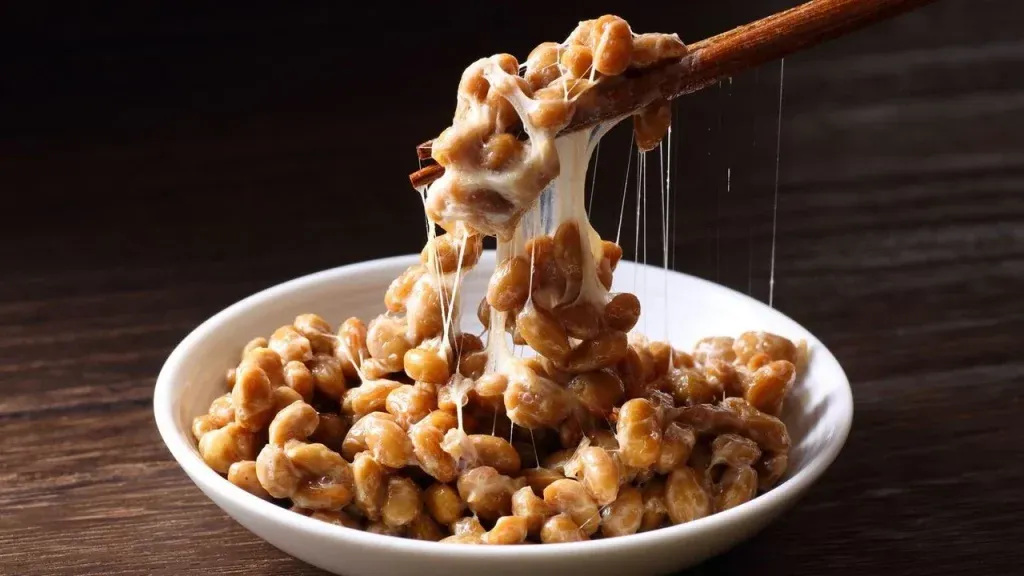What Does Natto Taste Like? Benefits of Fermented Soybeans

In the realm of culinary exploration, few foods can match the unique and acquired taste of natto. Originating from Japan, natto is a traditional fermented soybean dish that has intrigued and delighted palates for generations. But what exactly is natto, and how does it captivate the senses? Join us as we delve into the world of natto, its creation process, the potential health benefits it offers, and the captivating question: What does natto taste like?
Defining Natto
Natto is a traditional Japanese dish made from fermented soybeans. It's known for its distinctive aroma, gooey texture, and complex flavor profile. While natto's strong flavors might not be to everyone's liking, it remains a beloved part of Japanese cuisine and holds a special place in cultural and culinary history.
Crafting Natto
The process of making natto is a delicate fusion of time and transformation. It begins with steamed soybeans, which are then inoculated with a special strain of bacteria called Bacillus subtilis natto. This bacteria initiates the fermentation process, during which the soybeans develop a slimy coating and a pungent aroma. The resulting product is a concoction of flavors and textures that's truly one-of-a-kind.
Nutritional Gems in Natto
Protein Powerhouse
Soybeans, the primary ingredient in natto, are a high-quality source of plant-based protein. Protein is essential for tissue repair, muscle growth, and overall bodily function.
Rich in Vitamins and Minerals
Natto is a nutritional powerhouse, offering a wealth of essential vitamins and minerals. It's particularly rich in vitamin K2, which plays a crucial role in bone health and calcium metabolism.
Digestive Benefits
The fermentation process behind natto breaks down complex compounds, making it easier for the body to digest and absorb nutrients. Additionally, the probiotics formed during fermentation can contribute to a healthy gut microbiome.
Heart Health
Natto contains compounds like isoflavones that have been associated with heart health. Isoflavones can help manage cholesterol levels and support cardiovascular well-being.

What Does Natto Taste Like?
Natto tastes salty and bitter with almost a smell of aged cheese. The aroma is strong and distinct – often described as earthy, pungent, and sometimes likened to ammonia. The visual aspect can be intriguing or off-putting, as the beans are enveloped in a stringy, slimy substance.
Complex Flavor Profile
Natto's flavor profile is intricate and layered. It boasts umami notes, a touch of bitterness, and a lingering aftertaste. Some describe it as nutty, while others detect hints of fermented soy sauce. The soybeans themselves offer a textural contrast, with a soft interior and a slightly crunchy exterior.
Natto in Culinary Context
Savoring Tradition
Natto's cultural significance cannot be overlooked. It has been enjoyed in Japan for centuries and is often consumed as a breakfast dish, served over rice and paired with condiments like soy sauce, mustard, and green onions.
Creative Uses
While natto is traditionally enjoyed on its own or with rice, its unique flavor and nutritional benefits make it a versatile ingredient. It can be incorporated into salads, sushi rolls, and even used as a topping for noodles.
Culinary Boundaries Explored
Natto's culinary journey extends beyond its taste, encompassing its versatility and role in both traditional and modern dishes. Here are a few ways to embrace natto's unique flavors and incorporate it into your culinary repertoire:
1. Natto Rice Bowl
Create a classic Japanese-style natto rice bowl by serving natto over a bed of steamed rice. Drizzle with soy sauce, add a dollop of spicy mustard, and garnish with finely chopped green onions. This simple preparation allows the distinct flavors of natto to shine.
2. Natto Sushi Roll
Elevate your sushi game by rolling natto into your favorite sushi rolls. Combine natto with avocado, cucumber, and your choice of protein. The creamy textures of avocado and the crunch of cucumber complement natto's unique texture and flavor.
3. Natto Salad
Introduce natto into your salad repertoire by incorporating it into a mixed greens or seaweed salad. Toss natto with a light vinaigrette, along with other ingredients like edamame, cherry tomatoes, and toasted sesame seeds, for a nutrient-packed and flavorful dish.
4. Natto Stir-Fry
Add natto to a vegetable stir-fry for a burst of umami. Stir-fry your choice of vegetables, tofu, and natto together with a savory sauce made from soy sauce, garlic, ginger, and a touch of honey. Serve over rice or noodles for a satisfying meal.
5. Natto Noodles
Transform natto into a delicious noodle topping. Toss cooked noodles with natto, soy sauce, sesame oil, and a sprinkle of sesame seeds. The combination of textures and flavors creates a unique and satisfying dish.
Navigating the World of Natto
As you embark on your natto adventure, keep in mind that natto's taste is not easily forgotten. Its pungent aroma, gooey texture, and intricate flavor profile present a challenge to the palate, inviting a culinary exploration that extends beyond mere taste. Natto's essence is a testament to the wonders of fermentation and the cultural significance of traditional foods.
While natto might not be an immediate favorite for everyone, its health benefits, cultural relevance, and culinary versatility make it an ingredient worth considering. As you savor the complexities of natto, whether in traditional preparations or inventive culinary creations, remember that the essence of natto is a reminder of the diverse and vibrant world of flavors that culinary exploration can offer.
Want more new food ideas? Check out "Can You Freeze Sauerkraut?"